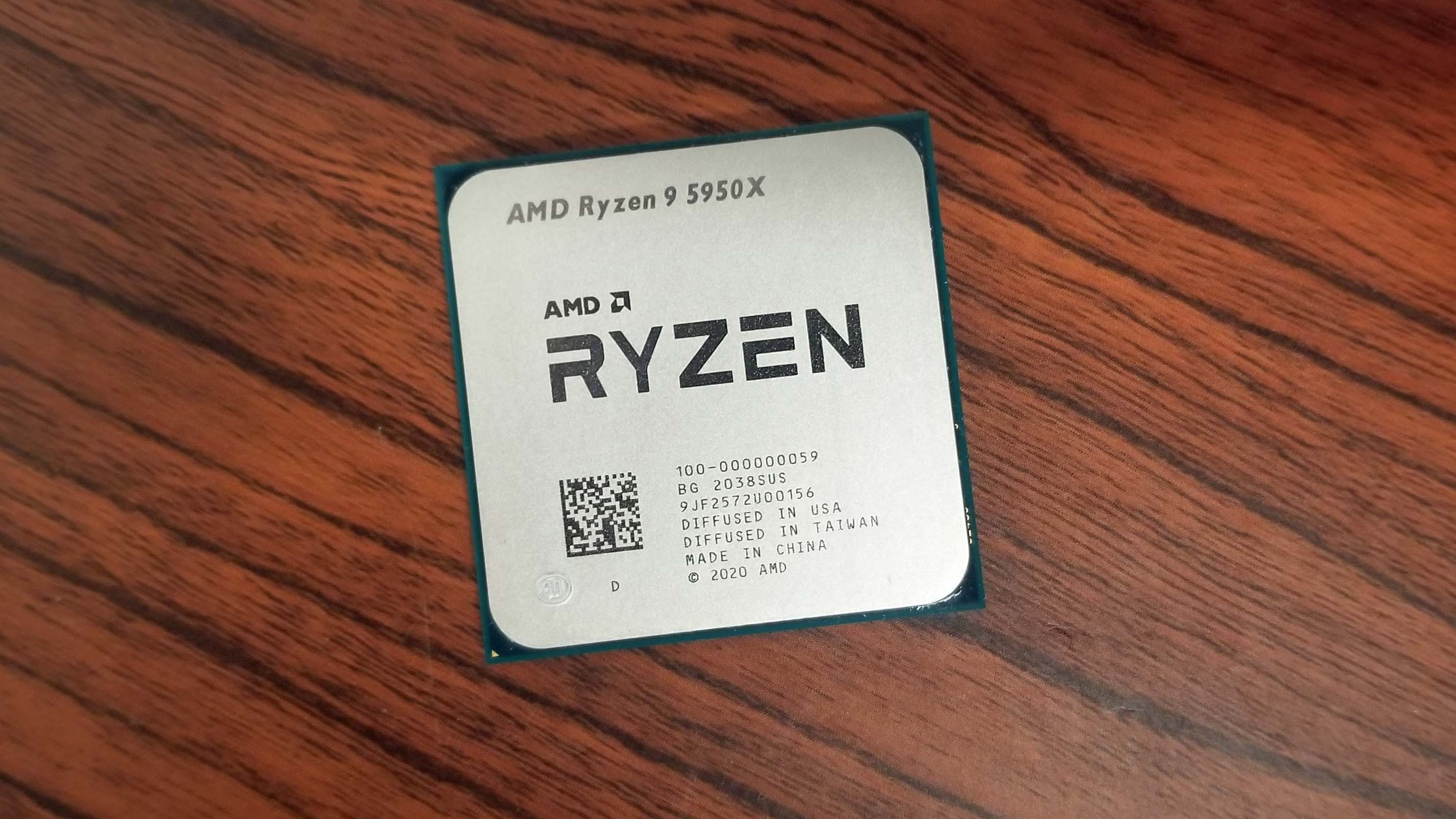Why you can trust Tom's Hardware
Ryzen 9 5950X and 5900X Power Consumption, Efficiency, Thermals
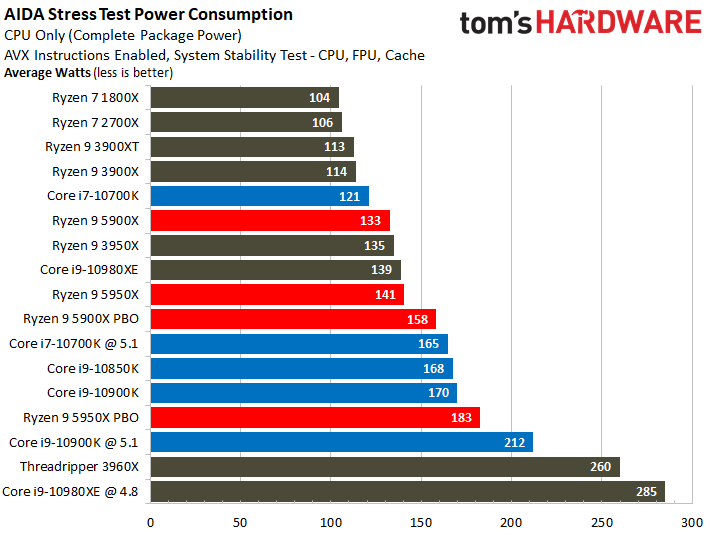
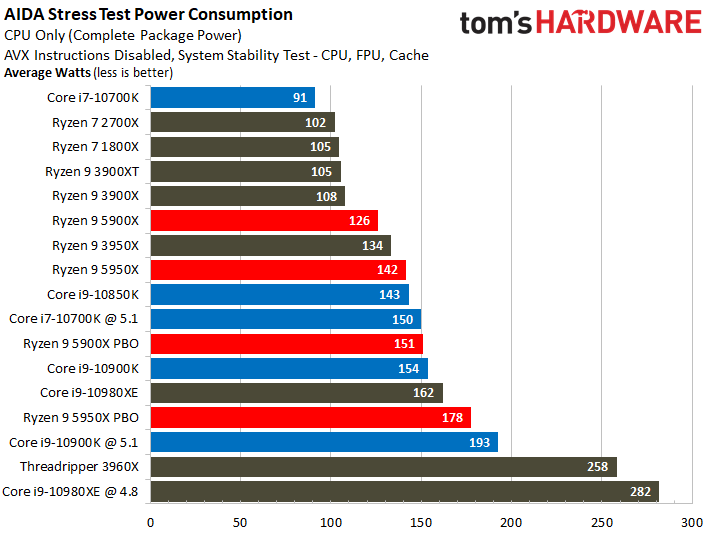
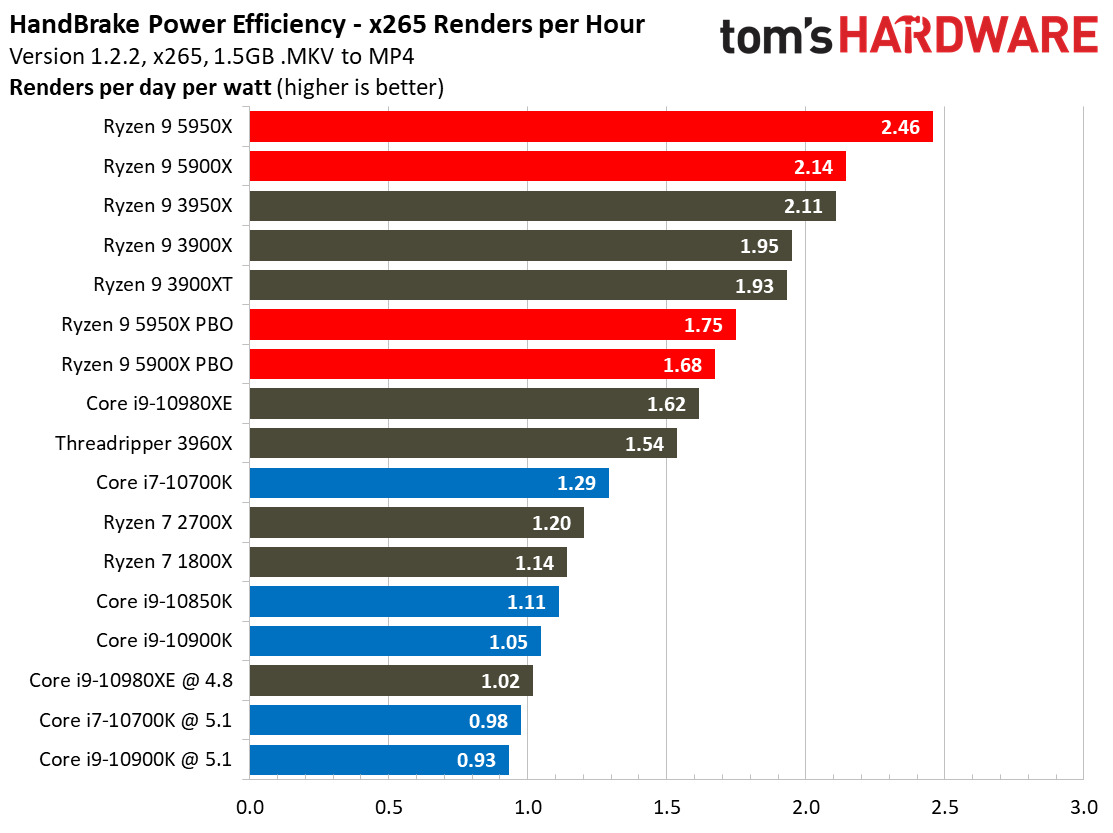
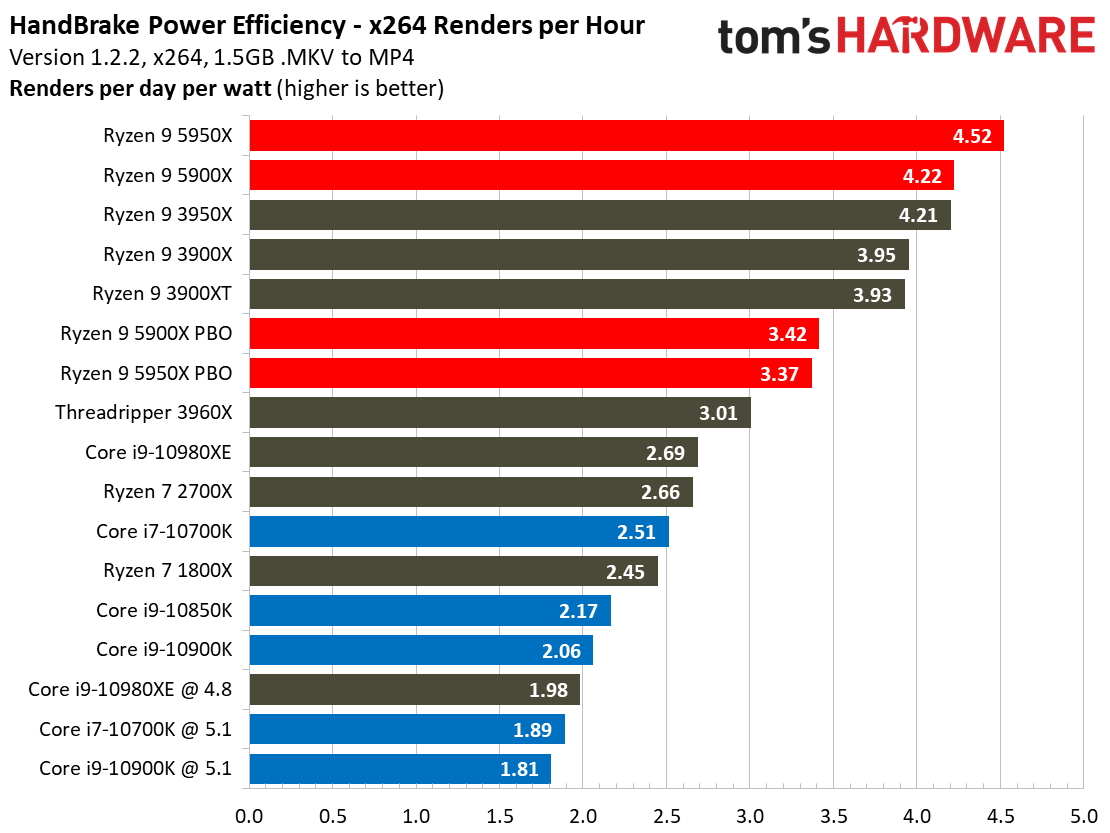
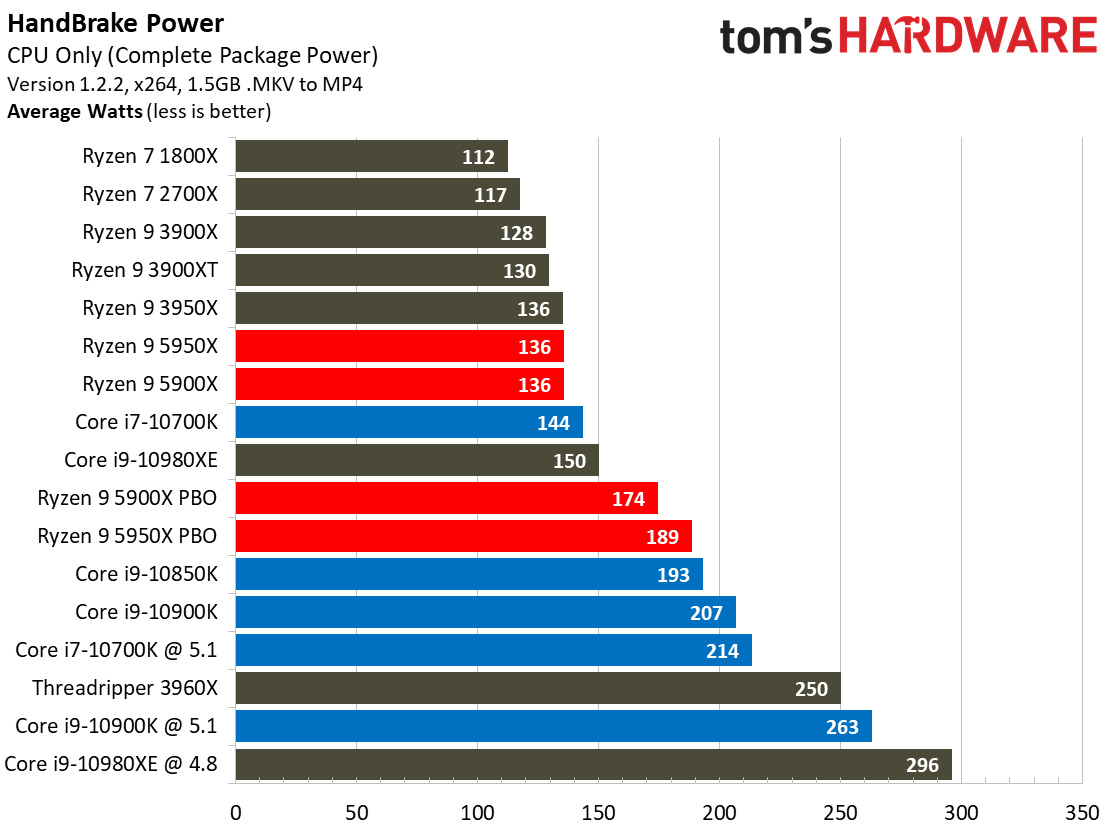
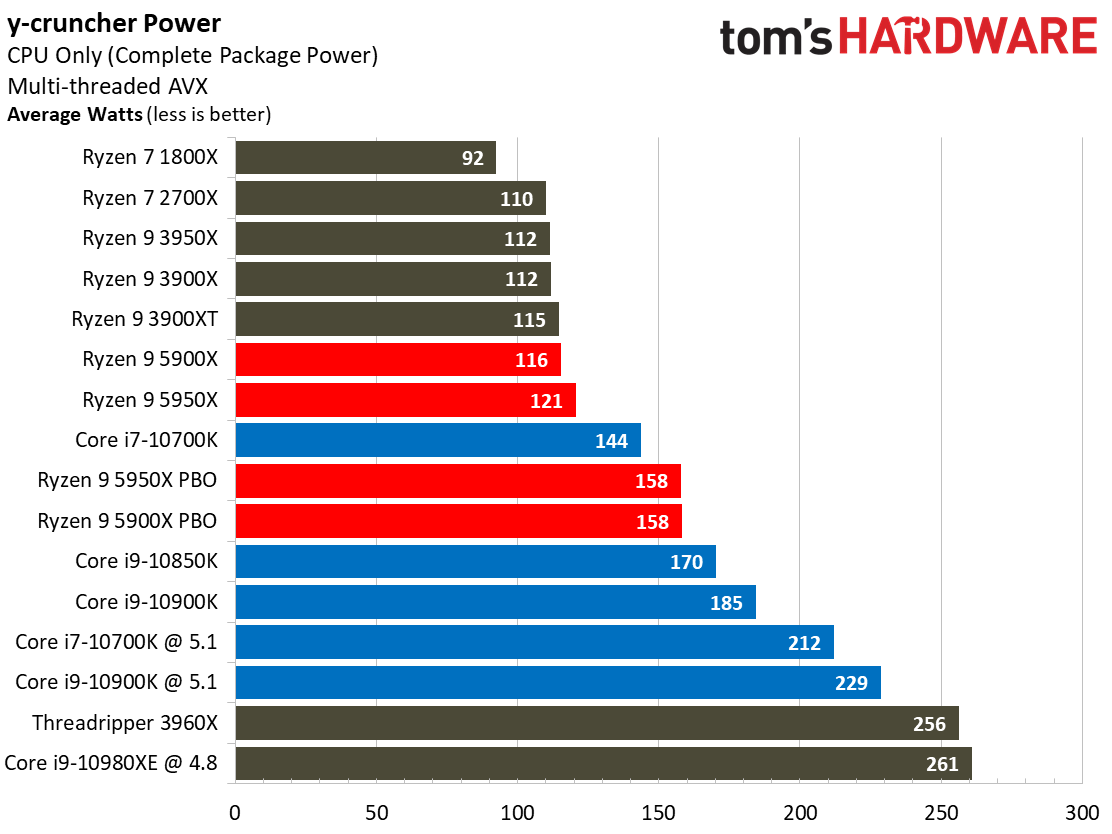
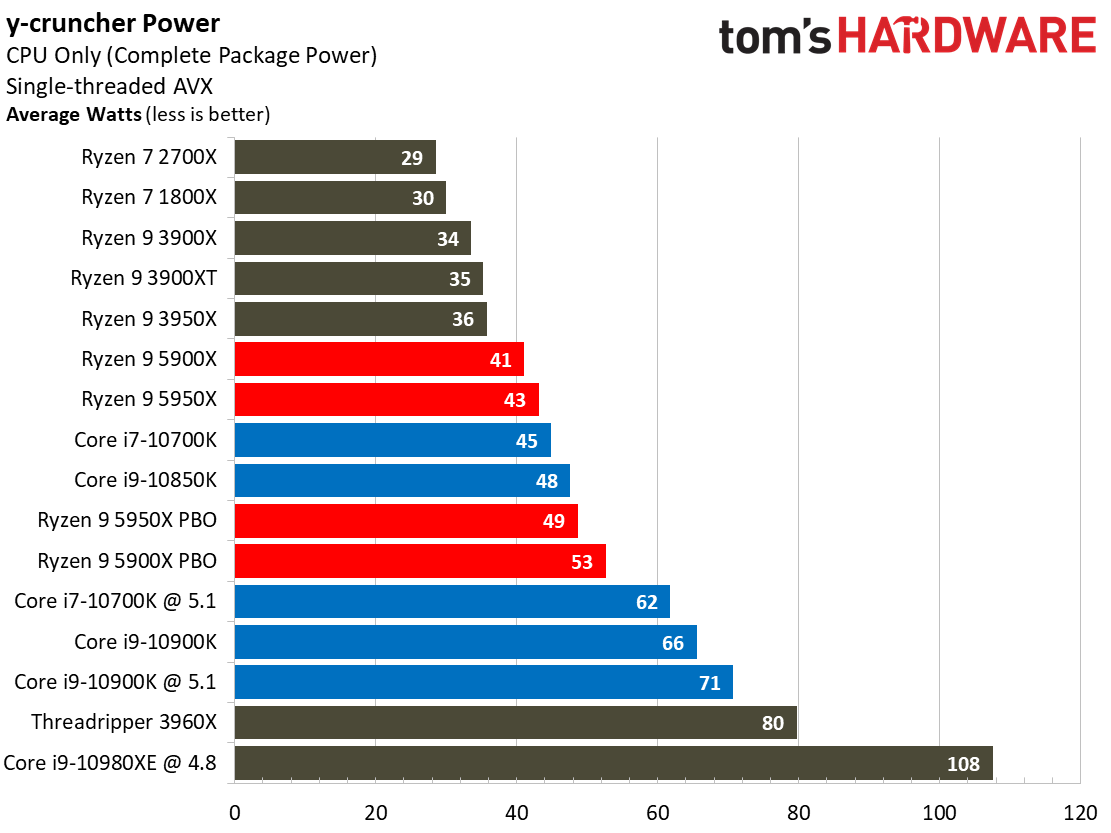
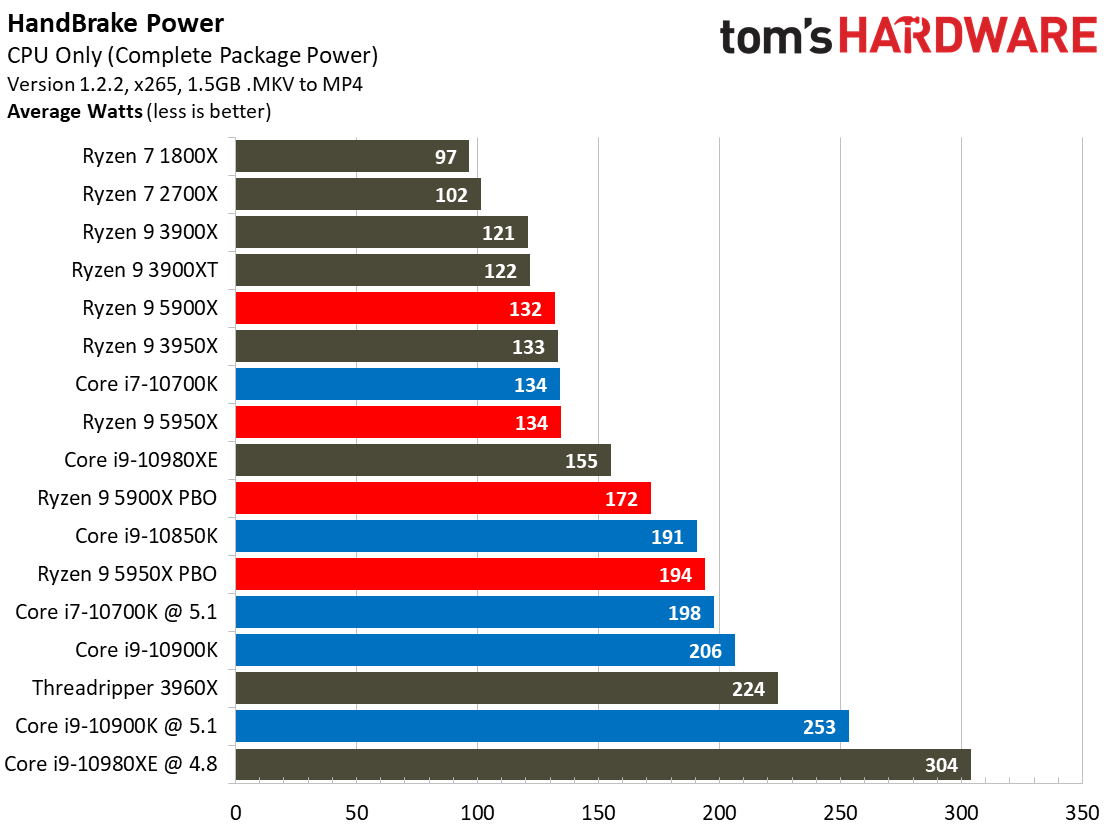
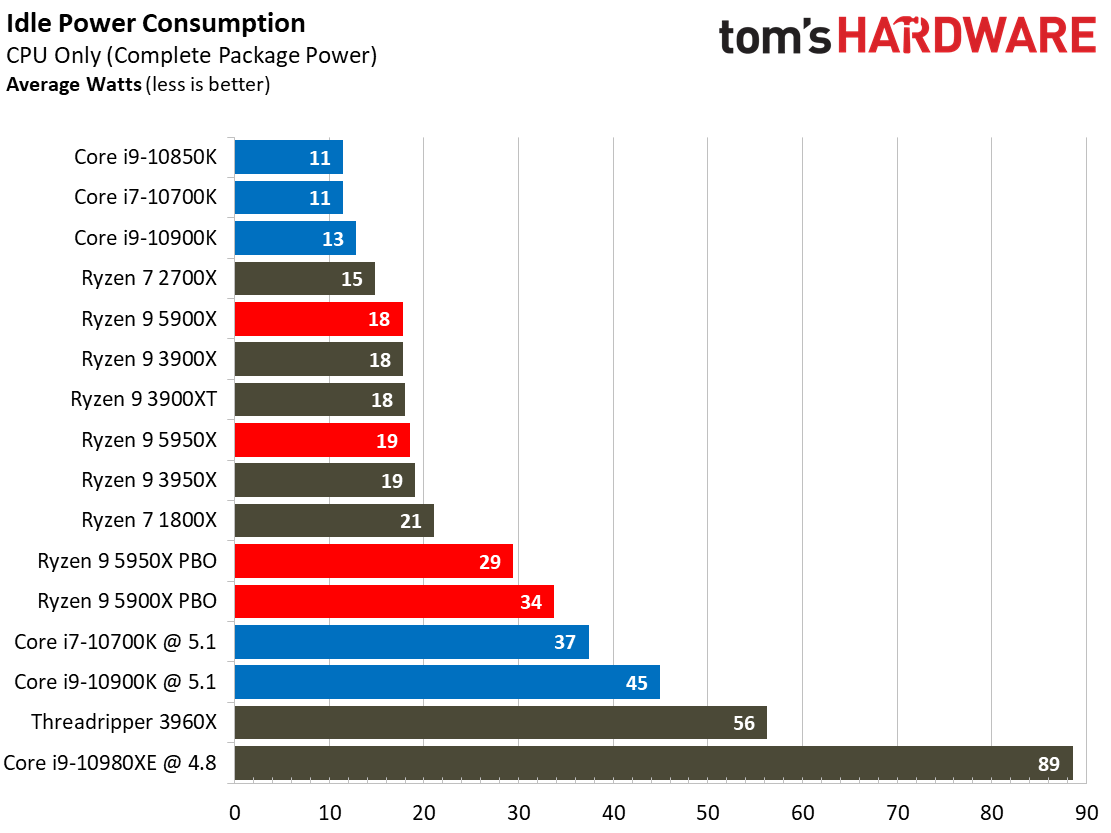
Notably, AMD's decision to stick with the AM4 socket still constrains its maximum power consumption to 142W, which means that the company could not increase power consumption for the new flagship models. However, Zen 3's IPC gains allow the Ryzen 5000 chips to stay within the same TDP thermal and electrical ranges as the Ryzen 3000 series CPUs while delivering more performance.
But there's a bit of nuance to the power story, though. As we can see in the AIDA power measurements, both the 5900X and 5950X draw slightly more power under load than their previous-gen counterparts. However, flipping to the 'renders per day per watt' charts shows that the chips are considerably more power-efficient than the Ryzen 3000 processors, meaning they deliver considerably more performance per watt.
Intel's chips are rather inefficient in comparison, which is a natural byproduct of using the older and less-dense 14nm node. Intel has also turned the dial up on the voltage/frequency curve to remain competitive, which also throws efficiency out the window in exchange for higher performance.
The net-net is that the Ryzen 5000 processors will draw far less power per unit of work than any of Intel's 14nm chips, thus resulting in a cooler and quieter system.
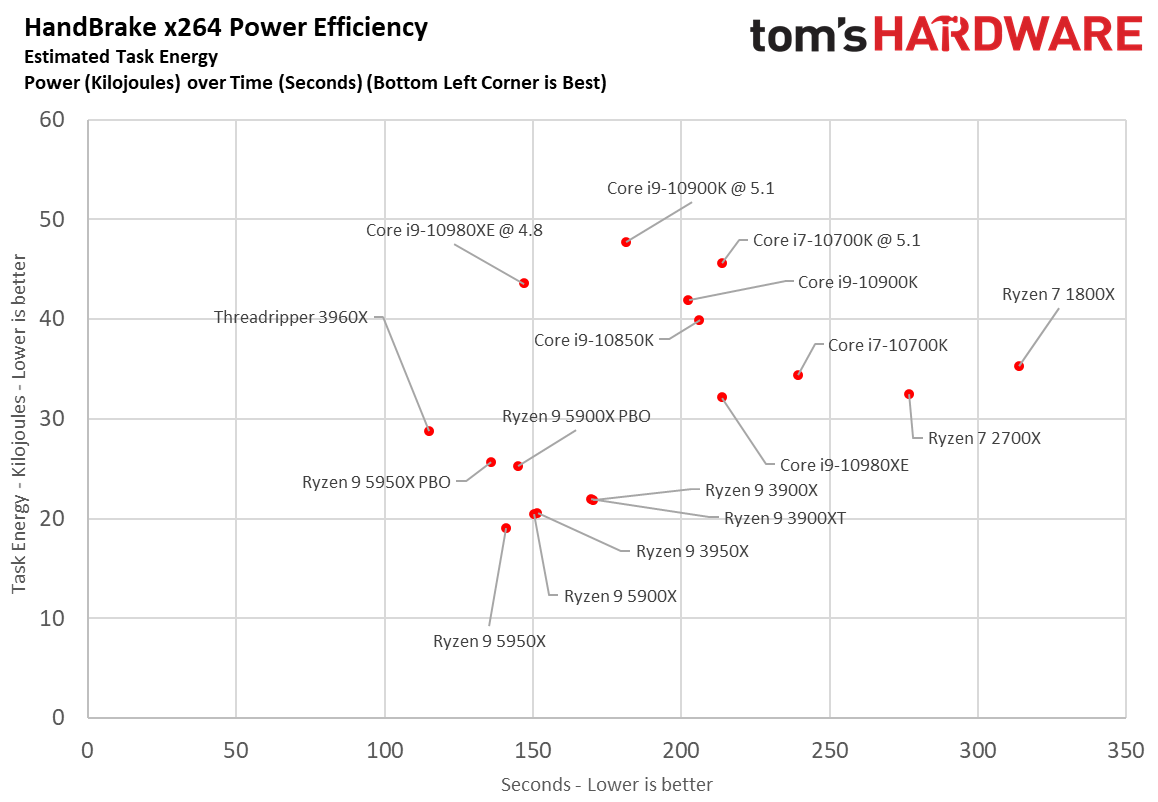
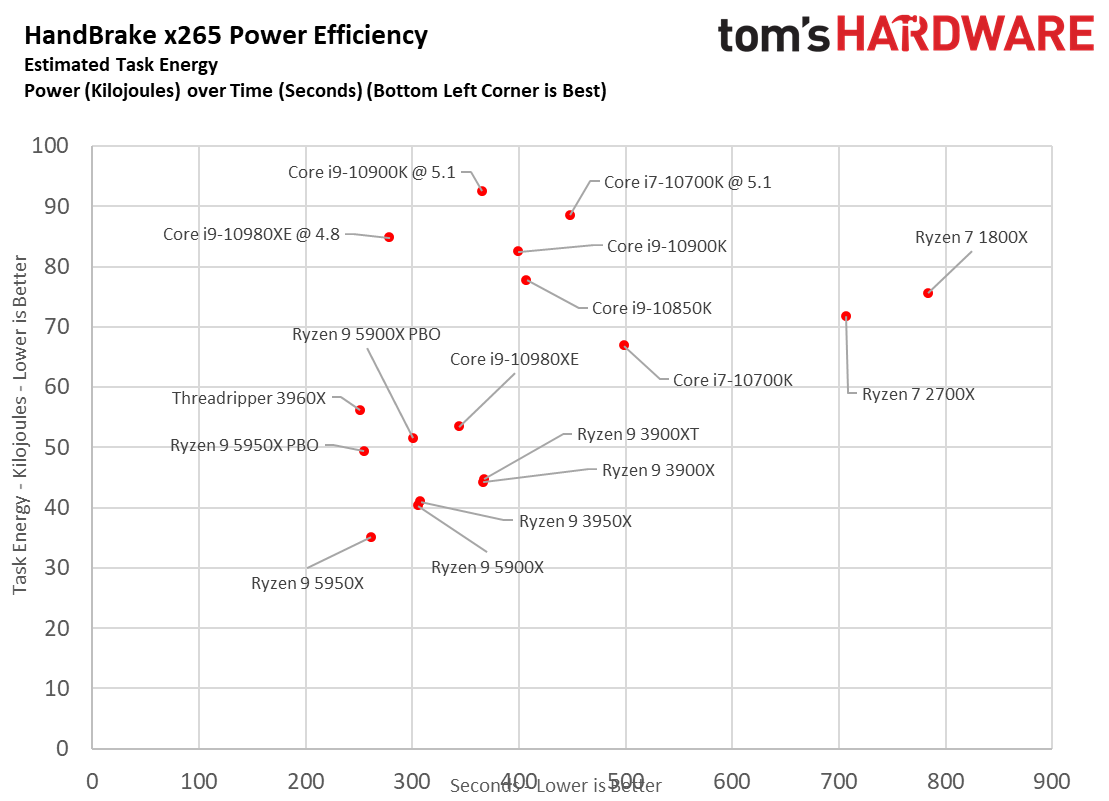
Here, we take a slightly different look at power consumption by calculating the cumulative amount of energy required to perform an x264 and x265 HandBrake workload, respectively. We plot this 'task energy' value in Kilojoules on the left side of the chart.
These workloads are comprised of a fixed amount of work, so we can plot the task energy against the time required to finish the job (bottom axis), thus generating a really useful power chart. Bear in mind that faster compute times, and lower task energy requirements, are ideal.
This measure really separates the wheat from the chaff, and the best results fall to the lower left-hand corner of the chart. The Intel chips populate the less-desirable upper right-hand side. Although the Core i9-10980XE makes a valiant attempt to get down to Ryzen territory, it still can't match the previous-gen Ryzen 3000 processors in terms of efficiency. Meanwhile, the Ryzen 5000 series leverages the Zen 3 architecture to great effect and falls further inside the performance-per-watt sweet spot, marking a new level of efficiency for a modern desktop chip.
Get Tom's Hardware's best news and in-depth reviews, straight to your inbox.
MORE: Best CPUs
MORE: Intel and AMD Processor Benchmark Hierarchy
MORE: All CPUs Content
Current page: AMD Ryzen 9 5950X and Ryzen 9 5900X Power Consumption, Efficiency, Thermals
Prev Page AMD Ryzen 9 5950X and Ryzen 9 5900X Boost Frequency, Overclocking, Test Setup Next Page AMD Ryzen 9 5950X and Ryzen 9 5900X Gaming Benchmarks
Paul Alcorn is the Editor-in-Chief for Tom's Hardware US. He also writes news and reviews on CPUs, storage, and enterprise hardware.
